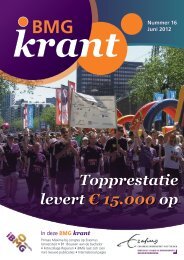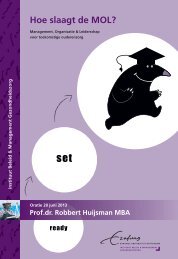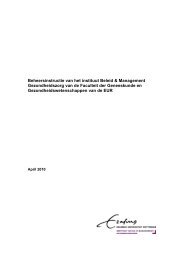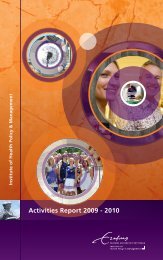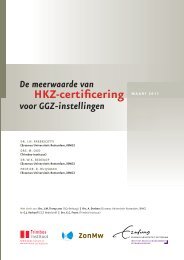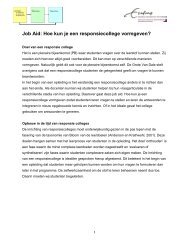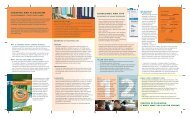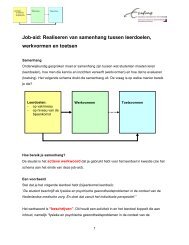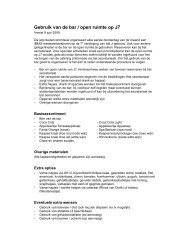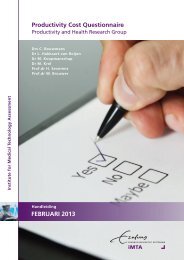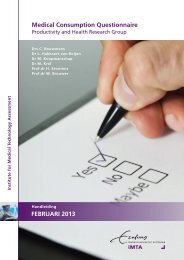Marten J. Poley - Erasmus Universiteit Rotterdam
Marten J. Poley - Erasmus Universiteit Rotterdam
Marten J. Poley - Erasmus Universiteit Rotterdam
- No tags were found...
Create successful ePaper yourself
Turn your PDF publications into a flip-book with our unique Google optimized e-Paper software.
96Chapter 6Table 6.5 CareQol Compared with the EQ-VASCareQol versusEQ-VASParents of patientswith ARM (n)Parents of patientswith CDH (n)Females Males Females MalesAll parents(n)CareQol > EQ-VAS 24% (26) 11% (11) 13% (6) 10% (4) 16% (47)CareQol = EQ-VAS 64% (70) 82% (80) 84% (38) 83% (34) 76% (222)CareQol < EQ-VAS 13% (14) 7% (7) 2% (1) 7% (3) 9% (25)Mean CareQol 74.15 (111) 81.64 (98) 83.60 (45) 84.32 (41) 79.49 (295)Mean EQ-VAS 74.91 (114) 81.78 (101) 83.47 (45) 84.10 (41) 79.75 (301)Table 6.6Regression AnalysisIndependent variables,standardized regression coefficients(Bêta) †Dependent variableFemale parentsDifferenceEQ-VASand EQ-VAS gpDifferenceEQ-5D andEQ-5D gpMale parentsDifferenceEQ-VASand EQ-VAS gp1) Congenital anomaly -0.21 ** -0.01 -0.05 0.02DifferenceEQ-5D andEQ-5D gp2) Child's age -0.03 0.01 -0.06 0.003) ARM symptom score -0.13 -0.09 -0.02 -0.134) CDH symptom score 0.03 -0.10 -0.05 -0.18 *5) Taking care alone or with a partner 0.02 -0.00 -0.10 -0.076) Having given up paid work 0.07 0.01 0.02 0.067) Unpaid activities to spend less time on -0.04 -0.08 0.02 -0.028) Gross income 0.11 0.20 * 0.15 0.179) Child's health-related quality of life 0.28 ** 0.08 0.24 ** 0.04Adjusted R 2 0.12 0.04 0.03 0.03***†GP = general population.Significant at the 0.05 level.Significant at the 0.01 level.Besides a constant. Forced entry (tolerance: 0.0001).Construct validity of the combination of EQ-VAS and CareQol. While the CareQolscore appeared not to differ significantly from the current health state asindicated on the EQ-VAS, this appeared however not to be the case for somesubgroups (Table 6.7). This verified the construct validity of the combination ofthe EQ-VAS and the CareQol. All 294 parents were divided into three groups. Ourhypotheses were largely confirmed. Generally, female parents, parents that hadto forgo paid work or unpaid activities, parents of children suffering manysymptoms and with a relatively low HRQoL (as reported by the parents) andparents with a relatively low HRQoL themselves (according to the EQ-VAS) wereover-represented in the subgroup of people who claimed that their health statewould increase in the CareQol scenario.





